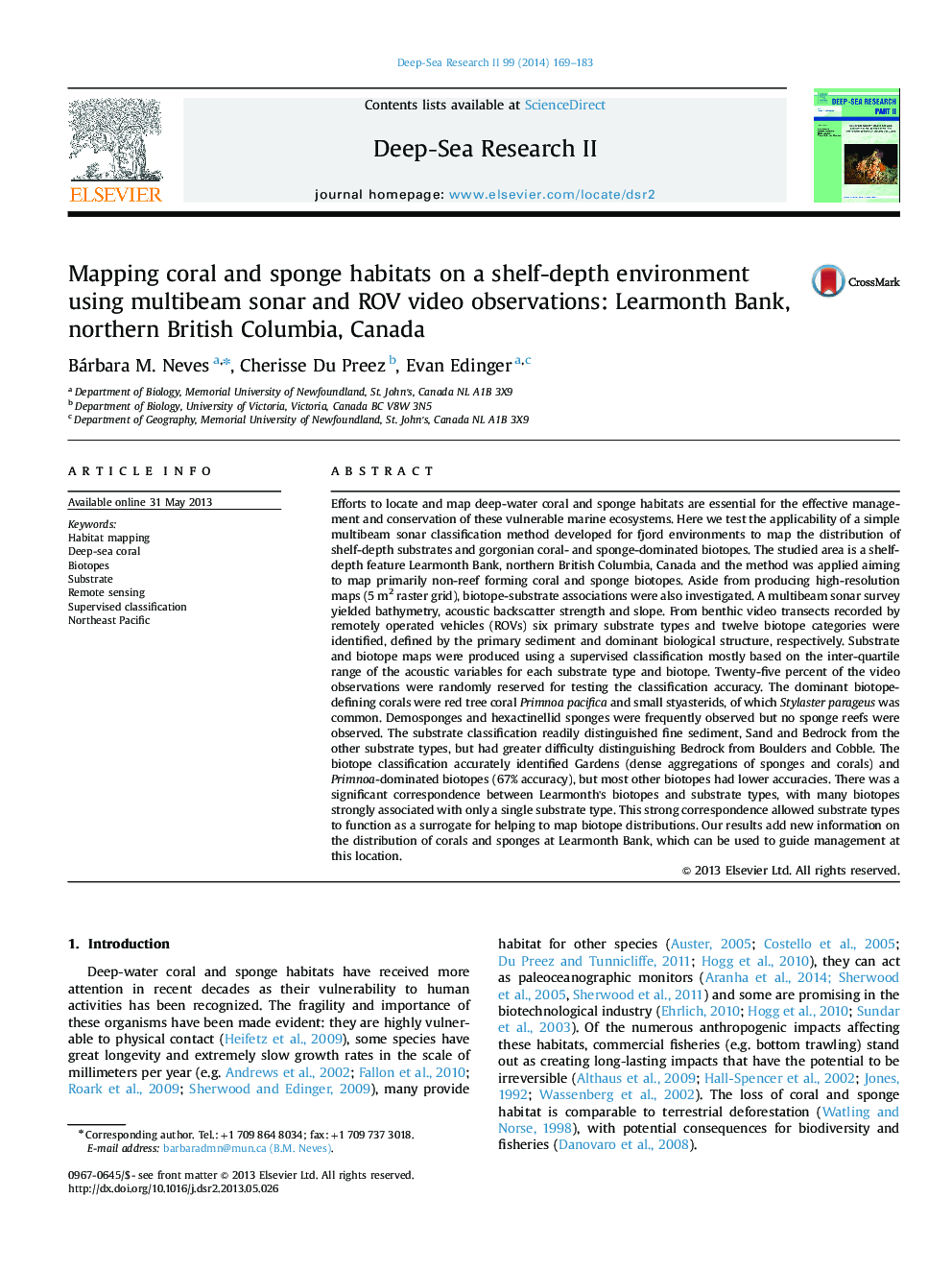| کد مقاله | کد نشریه | سال انتشار | مقاله انگلیسی | نسخه تمام متن |
|---|---|---|---|---|
| 6384277 | 1626441 | 2014 | 15 صفحه PDF | دانلود رایگان |
عنوان انگلیسی مقاله ISI
Mapping coral and sponge habitats on a shelf-depth environment using multibeam sonar and ROV video observations: Learmonth Bank, northern British Columbia, Canada
دانلود مقاله + سفارش ترجمه
دانلود مقاله ISI انگلیسی
رایگان برای ایرانیان
کلمات کلیدی
موضوعات مرتبط
مهندسی و علوم پایه
علوم زمین و سیارات
زمین شناسی
پیش نمایش صفحه اول مقاله

چکیده انگلیسی
Efforts to locate and map deep-water coral and sponge habitats are essential for the effective management and conservation of these vulnerable marine ecosystems. Here we test the applicability of a simple multibeam sonar classification method developed for fjord environments to map the distribution of shelf-depth substrates and gorgonian coral- and sponge-dominated biotopes. The studied area is a shelf-depth feature Learmonth Bank, northern British Columbia, Canada and the method was applied aiming to map primarily non-reef forming coral and sponge biotopes. Aside from producing high-resolution maps (5Â m2 raster grid), biotope-substrate associations were also investigated. A multibeam sonar survey yielded bathymetry, acoustic backscatter strength and slope. From benthic video transects recorded by remotely operated vehicles (ROVs) six primary substrate types and twelve biotope categories were identified, defined by the primary sediment and dominant biological structure, respectively. Substrate and biotope maps were produced using a supervised classification mostly based on the inter-quartile range of the acoustic variables for each substrate type and biotope. Twenty-five percent of the video observations were randomly reserved for testing the classification accuracy. The dominant biotope-defining corals were red tree coral Primnoa pacifica and small styasterids, of which Stylaster parageus was common. Demosponges and hexactinellid sponges were frequently observed but no sponge reefs were observed. The substrate classification readily distinguished fine sediment, Sand and Bedrock from the other substrate types, but had greater difficulty distinguishing Bedrock from Boulders and Cobble. The biotope classification accurately identified Gardens (dense aggregations of sponges and corals) and Primnoa-dominated biotopes (67% accuracy), but most other biotopes had lower accuracies. There was a significant correspondence between Learmonth's biotopes and substrate types, with many biotopes strongly associated with only a single substrate type. This strong correspondence allowed substrate types to function as a surrogate for helping to map biotope distributions. Our results add new information on the distribution of corals and sponges at Learmonth Bank, which can be used to guide management at this location.
ناشر
Database: Elsevier - ScienceDirect (ساینس دایرکت)
Journal: Deep Sea Research Part II: Topical Studies in Oceanography - Volume 99, January 2014, Pages 169-183
Journal: Deep Sea Research Part II: Topical Studies in Oceanography - Volume 99, January 2014, Pages 169-183
نویسندگان
Bárbara M. Neves, Cherisse Du Preez, Evan Edinger,